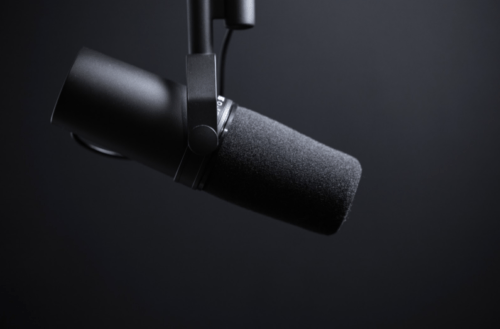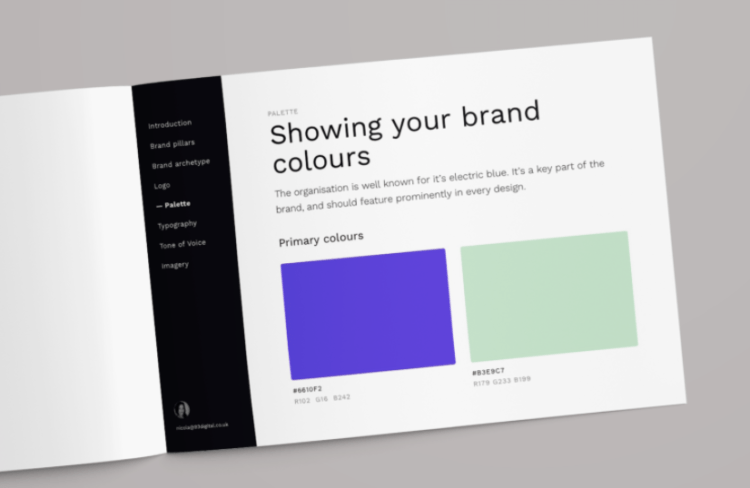Why does your B2B marketing strategy need a podcast?

Whether you’re in the bath, on a walk, cleaning the house, or making lunch, a podcast is a great way to use those spare moments. And it’s becoming more and more likely that a podcast is your chosen companion.
18% of adults in the UK listen on a weekly basis (Spring 2020), up from 14% in 2019.
As a marketing channel, podcasts offer an opportunity to reach your target audience on a personal level. For a B2B target audience, you can attract listeners by providing entertaining and informative content that enhances careers.
The conversational tone of a podcast engages listeners in a more intimate way than social media or blog posts, which are easy for readers to swipe through meaninglessly. In this way, podcasts are more likely to influence a listener, as they place trust in your host and guests as thought leaders.
It does take time to grow a loyal audience and reach impactful listening metrics. As well as this, other marketers are quickly catching on to the value of a podcast, which means you might have to start your podcast in a competitive landscape.
However, with an initial process that sets you up for success, your podcast can rise above the rest.
- Niche down
- Decide on a format
- Create an editorial calendar
- Find a podcast host
As you read on, ask yourself “why do I want to make a podcast?” This will influence who you want to reach, what stage of the funnel they might be at, if this podcast is to impact their buyer decisions or if it’s simply a value add.
Niche down
Think of your target audience, and niche down further.
Although your target market might already have plenty of podcasts, listeners will still be drawn to your podcast if it discusses their area of work in more specific detail.
Despite having a smaller amount of potential listeners, they are likely to be more engaged and loyal.
For example, if your business’s target audience is marketers, you’d be intimidated by the sheer amount of marketing podcasts that already exist. When you look at B2B marketing podcasts, the landscape is nearly as flooded. If you niche it down further into a smaller sector, such as B2B FinTech or B2B content marketing, you’ll find more opportunity to be successful.
Decide on a format
A podcast format should be repeatable and scalable for a simple production process. For listeners, it should be predictable but have an interesting hook that varies between episodes to keep listeners coming back.
B2B buyers want to interact with their industry, share mutual passions, keep up with trends and gain practical advice on how to solve their current challenges. Your chosen format should emulate these needs.
Baring in mind competition to limit overlap, here are 4 formats to consider:
- Host and guest interviews
Host and guest interviews are the most popular podcast format for good reason. The host enables a sense of familiarity, and should identify with listeners to ask the questions they want answered.
Guests provide thought leadership content through their direct expertise, while offering topics that keep the show current and interesting. The credibility of their company or job title is transferred to your podcast, as well as the opportunity for promotion to their own personal network.
It is best to let your guests choose their own topic to make the recording process enjoyable, and to squeeze out the most useful insights from your guest.
Have an unrecorded conversation with your guest in advance to gain further understanding of their chosen topic. This conversation should help you formulate specific questions so that the episode dives deep into the topic. Questions should be given to the guest well before recording so that they can prepare insightful answers.
- Quick bites
Quick bites of 3 to 10 minute episodes are a great alternative for listeners with short attention spans or limited time.
These should provide immediate value and be directly relevant to the episode title.
They can be quick how-tos, rundowns of industry news or thought leadership content repurposed from blog posts.
If you’re going to keep each episode short, it’s important to publish regularly in order to gain traction and a loyal audience.
- Repurposed webinars
Repurposing webinars is a great way to stretch existing content for further reach. In doing so, it goes on a platform that is discoverable and accessible for a larger audience.
This is a viable option for businesses with limited production time and an archive of previous webinars.
- Conversational co-hosting
Why have one great host when you can have two?
Instead of 40 minute monologues about relevant industry topics, having another person to bounce ideas off and create a conversation with can keep your podcast fun and interesting.
Your hosts should be thought leaders within their field with plenty of practical experience and knowledge of current industry news.
Create an editorial calendar
Niched down and with a format decided, it’s time to work out timelines.
A consistent, regular schedule is important for gaining traction and keeping listeners engaged. Listeners should be able to expect new episodes at the same time each week or month, so that your podcast becomes a natural habit in their routine.
Work out how much time is needed at each stage of the production process to deliver episodes consistently and on time. It helps to split the production process into stages – preparation, recording and post production.
- Preparation: This could involve guest outreach, question formulation, scheduling, or topic research.
- Recording: How long will it take you to record each episode?
For formats with guests, it is useful to schedule more time before you hit the record button to make sure technical logistics are sorted, and to make your guest feel comfortable.
One way to record your episodes is through a tool called SquadCast. In a remote working world and without the luxury of a studio or expensive equipment, SquadCast records audio locally to ensure the best possible quality.
- Post Production: This includes editing, uploading audio and promotion.
Peopleperhour is a useful website to find freelance editors and ensure secure payment.
Promotion can include a post on your own website, emails, and posts on your and your guests’ social media channels. Without promotion your podcast won’t have a head start.
Post production also includes writing a description of the podcast, making a transcription, adding chapters and liaising with guests about publication dates.
Find a podcast host
Podcast hosts store and deliver large audio files so that listeners can download them without slowing down servers and affecting your own website.
They make uploading and promoting easy by automatically submitting each episode to other podcast directories such as Apple Podcasts and Spotify.
You can schedule episodes ready to be published with chapter markers, transcriptions and descriptions to help people find your podcast.
Another benefit to using a podcast host is that you will be able to track listenership through download stats. These will help you to see how many people are listening to each episode, what device they’re listening on, what city they’re listening from and how these statistics are changing over time.
Two recommended podcast hosts are:
- Podbean
Podbean has an integrated design tool with which you can create customisable themes for your podcast.
The promotion tools distribute your episodes to the top podcast directories, which means your audience will be able to find your show on their preferred platform.
There’s an opportunity to monetise your podcast through Podbean’s advertising marketplace, as well as an opportunity to be amongst a strong community of other podcasters.
Podbean offers a free version as well as unlimited hosting with unlimited bandwidth for $9 a month.
- BuzzSprout
BuzzSprout is perfect for beginners, with a user friendly layout and uploading process.
They also distribute your episodes to top podcasting directories, so that your listeners can tune in on their favourite app and on their preferred device.
The BuzzSprout embed player can place your episodes on your own website, with a sleek design that showcases the episode image. Embeds are made even easier if you’re on WordPress with this free plugin.
The free version is limited and lasts for 90 days. Beyond that, plans start at $12 per month for 3 hours upload.
Get started!
The hardest part is often starting, but once you’ve established why you’re making the podcast, who you want to reach, and how you will reach them, podcasting is a relatively easy process to incorporate into your marketing activities.
Gaining traction will come easily once you’ve got episodes under your belt and if you keep a consistent schedule. With a long term vision, your podcast will allow you to reach and influence your target market.

The 5 inbound marketing channels you need to be utilising

How brand guidelines help to deliver your B2B website design project
Let's Talk
Do you have a web design and build project coming up that you would like to talk about?